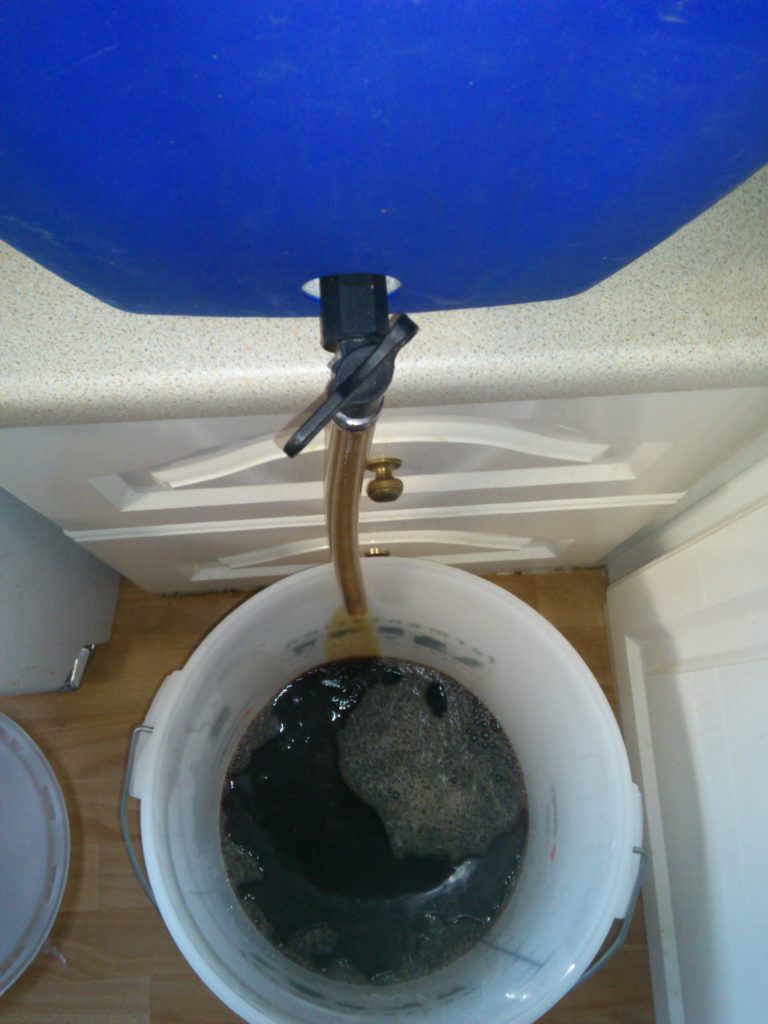Session Stout Recipe

Seasonality plays an important role in beer making, I know from brewing commercially that the lighter ABV session beers start losing traction as the weather turns more autumnal. Sitting outside in the sunshine warrants a light summery beer. Now the sun is fading and making way for less clement weather a heavier, more warming beer is called for.
In previous years I would be looking at brewing something full of body. this would usually mean a higher malt bill to increase the ABV of the beer giving it more backbone. This year though my attitudes are changing, I have preferred to mainly drink and brew session beers and lower ABV beers keeping my alcohol consumption in check.
This is not something a lot of home brewers talk about on the message boards but when you brew a couple of times a month and have plenty of beer or wine around it can lead to overindulging. Fortunately though when you control the brewing process and recipe development yourself you can tailor your beers to something that is appropriate for you.
Session Stout
A full bodied lower ABV session beer? Balancing a beer like this can be a tricky thing, retaining the body in a beer is harder when you are putting less malt in but with a few simple tweaks and a little bit of thought about the recipe itself it is not all that difficult.
For this stout I want a velvety mouthfeel, something that you have after dinner instead of dessert so here’s my thinking:
Mash High: increasing the temperature changes the activity of enzymes during the mash, leaving more unfermentable dextrins. The beer will retain a bit more body and won’t ferment all the way out leaving it thin and watery.
Yeast Strain: Selecting a strain with a lower attenuation will leave a higher final gravity, again retaining body. Attenuation is usually indicated on a package of yeast as a percentage. The measured percentage is the difference between the specific gravity before and after fermentation or in other words the measure of how well the yeast turn available sugars into alcohol. Selecting a lower attenuating yeast means the yeast stop working or are unable to ferment further than a certain point leaving a sweeter beer with more body.
Lactose: Using lactose which is the sugar found in milk, will sweeten the beer and give it more perceived body. Lactose isn’t readily fermentable by brewer’s yeast so any addition is going to remain in the beer and leave a residual sweetness.
I’m not planning to overload the beer with lactose but a subtle addition will just bolster the malt backbone and change the beer from an otherwise dry, thin and bitter stout.
Carbonation: A good way to alter the way a beer feels in the mouth is to adjust your carbonation. This is something that can often get overlooked but dropping the carbonation way down will make this beer seem velvety and chocolatey without having to alter the ingredients at all.
You will notice this if you regularly drink dark cask beers, the mouthfeel is a lot richer than the bottled varieties of the same beer, it’s amazing how much difference carbonation can make to a beer.
The grain in this beer is simple, dark malts are complex enough without having to put to many different types of grain in the grist. Keeping things simple and traditional is always my preferred method of brewing so we have three types of malt and the sugar addition.
Hops are again simple, one addition at the start of the boil, one 15 minutes before the end.
Session Milk Stout - Sweet Stout
================================================================================
Batch Size: 19.000 L
Boil Size: 23.596 L
Boil Time: 60.000 min
Efficiency: 70%
OG: 1.042
FG: 1.013
ABV: 3.8%
Bitterness: 31.4 IBUs (Tinseth)
Color: 43 SRM (Morey)
Fermentables
================================================================================
Name Type Amount Mashed Late Yield Color
Pale Malt (2 Row) UK Grain 3.000 kg Yes No 78% 3 L
Brown Malt Grain 250.000 g Yes No 70% 71 L
Black Malt Grain 450.000 g Yes No 55% 610 L
Milk Sugar (Lactose) Sugar 200.000 g No Yes 76% 0 L
Total grain: 3.900 kg
Hops
================================================================================
Name Alpha Amount Use Time Form IBU
Golding 5.0% 40.000 g Boil 60.000 min Leaf 25.2
Golding 5.0% 20.000 g Boil 15.000 min Leaf 6.2
Yeast
================================================================================
Name Type Form Amount Stage
Safale S-04 Ale Dry 11.000 g Primary
Mash
================================================================================
Name Type Amount Temp Target Time
Infusion Infusion 10.360 L 74.857 C 68.000 C 0.000 s
Final Batch Sparge Infusion 17.124 L 79.455 C 74.000 C 15.000 min




Being diabetic, I am trying to lower unfermentable sugars in my recipes w/o losing all the body. Other increasing the etch, how else can I keep some body? What about adding autolysised yeast manoproteins? Any ideas are welcome, shon
Hi Shon, thanks for your question. I should point out that I don’t understand enough about the effects of alcohol on diabetes so this is on no way medical advice. Make sure you do what’s right for you!
With that being said, the only real ways to retain body in a beer is to leave residual unfermentables in it. These unfermentables will either be in the form of sugar/carbohydrates which are obviously unwanted for your situation or proteins. Focusing on upping the protein content of your beers could help you retain more body. Flaked oatmeal and flaked wheat contain higher percentages of protein so adding a proportion of these will enhance the mouthfeel of a beer and increase the perceived body.
The other option that may be considered is to choose a style of beer that is naturally quite dry but also has enough flavour to make up for the reduced final gravity. As an example some Saison yeasts or Belgian style yeast can ferment a beer out to a very low final gravity compared to other strains leaving lower unfermentable sugars but still retain plenty of character and flavour.
Adding enzymes such as alpha amylase to the fermenter will really help drop the unfermentable content of the beer but unfortunately again, strip out the body so build up the flavours elsewhere using dark malts or with higher hopping rates to try and bring in more interesting flavours.
Lastly try dropping the carbonation levels down when you bottle or keg so it isn’t as fizzy, this will give the impression of a thicker more viscous beer whilst not altering the fermentables at all.
I hope this may have helped you in some way.